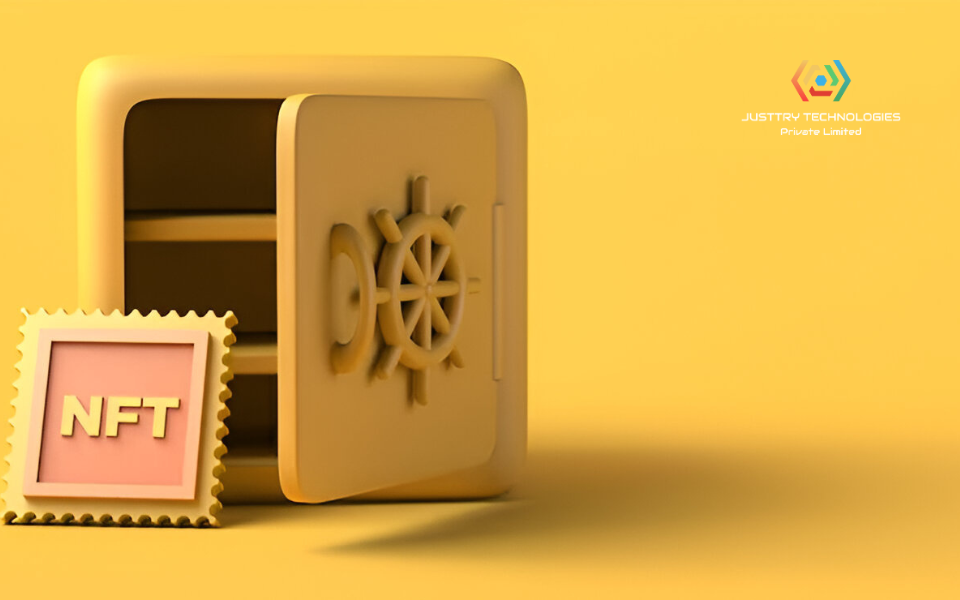Introduction
In the past few years, non-fungible tokens (NFTs) have opened up a world of creative expression, digital ownership, and new business models. But alongside their rise, we’ve seen hacks, lost keys, and vulnerable storage solutions jeopardize prized digital assets. As we move into 2025, it’s more important than ever to use smarter, more secure ways to keep your NFTs safe. Whether you’re an artist minting your first token or a company offering NFT development solutions, understanding the landscape of wallet and storage options will help you protect your investments and creations.
Understanding the Risks: Why Secure Storage Matters for Your NFTs
When you mint an NFT, you’re really creating a record on a distributed ledger that points to a piece of content—an image, a video, or even a 3D model. But that on‑chain record often links to off‑chain data, stored somewhere on the internet. If that data disappears or if your private key is compromised, your NFT could become impossible to sell—or worse, someone else could claim it as theirs. Common risks include:
- Key theft or loss: If you store your private key on an internet‑connected computer without extra protection, a hacker or malware can swipe it.
- Service outages: Some NFT marketplaces or storage services go offline temporarily or permanently, leaving your assets unreachable.
- Link rot: When the server hosting your NFT’s actual media goes down, your token may only point to an empty URL.
Knowing these pitfalls is the first step. Next, let’s explore smarter ways to keep your NFTs safe in 2025.
Smarter Storage Options for Your NFTs in 2025
1. Hardware Wallets (Cold Storage)
Hardware wallets remain the gold standard for securing private keys. Devices like Ledger or Trezor store your keys in a tamper‑resistant chip, completely offline. Even if your computer is infected, the hacker can’t access the key without physical possession of the device. When you combine a hardware wallet with a passphrase and backup seed phrase stored in a safe, you’ve locked down your NFTs in a way that’s nearly unbreakable.
2. Software Wallets (Hot Wallets) with Enhanced Security Features
Hot wallets are more convenient because they connect directly to websites and apps. However, simple browser extensions or mobile apps aren’t enough anymore. Look for wallets that offer:
- Multi‑factor authentication (MFA): A second device or biometric check to approve transactions.
- Behavioral alerts: Warnings when a transaction looks unusual or the destination address isn’t recognized.
- Built‑in recovery tools: Encrypted cloud backups or social recovery systems that let you designate trusted contacts who can help restore access.
These advanced features help bridge convenience and safety, so you’re not left choosing one over the other.
3. Smart Wallets: The Future of NFT Storage?
Smart wallets take hot wallets a step further by embedding programmable rules directly into your key management. Imagine a wallet that only allows transfers during certain hours, or one that splits approvals among multiple guardians. While still an emerging field, these wallets promise a more dynamic way to manage risk. They often come with a user‑friendly interface, making it easier for creators and collectors alike to handle security without needing a deep technical background.
4. Exploring Decentralized Storage Solutions like IPFS for NFTs
Traditional web servers can fail or go offline, but decentralized networks replicate data across many nodes. Two popular options for NFT content storage are:
- Arweave NFT storage: Uses a “pay once, store forever” model. By paying a small fee upfront, your data lives on permanently, anchored by a blockchain‑based endowment. This ensures your artwork or media stays intact even if the original creator’s website goes down.
- Storj NFT storage: Splits files into encrypted pieces and stores them across a peer‑to‑peer network. Since no single server holds the whole file, there’s no single point of failure. And redundancy means your content is retrievable even if some nodes disappear.
Integrating these decentralized storage layers adds an extra shield against link rot and centralized outages, reinforcing the on‑chain ownership with off‑chain resilience.
Best Practices for Securing Your NFTs in 2025: A Comprehensive Guide
- Use a Reputable NFT Development Company for Your Platform
If you’re building your own marketplace or minting service, partner with experts in NFT platform development. They’ll know how to integrate secure key management and decentralized storage options from the ground up. - Adopt a “Layered Defense” Approach
Combine cold storage (hardware wallets) for long‑term holdings with hot wallets that have strong MFA and alerts for day‑to‑day transactions. - Regularly Update and Audit Your Tools
Whether it’s a wallet app or a backend SDK for blockchain NFT development, keep everything up to date. Developers of NFT blockchain development tools often patch vulnerabilities—install these fixes promptly. - Practice Safe Backup Habits
Store seed phrases and recovery information in multiple offline locations. Avoid digital photos or cloud notes that can be hacked. A fireproof safe or a trusted third‑party vault works best. - Educate Your Team and Community
Phishing remains a top attack vector. Offer clear, human‑friendly guides on how to verify URLs, recognize impostor emails, and never share private keys. - Plan for the Unexpected
Use social recovery or multi‑signature wallets so that if one key is lost, designated guardians or co‑signers can help regain control without compromising total security.
Conclusion
As NFTs continue to redefine digital ownership and creative business models in 2025, how you store and secure them is just as vital as the art or utility they represent. By combining hardware wallets, advanced hot wallets, programmable smart wallets, and decentralized storage solutions like Arweave NFT storage and Storj NFT storage, you build a multi‑layered fortress around your assets. Working with a seasoned NFT development company or leveraging robust NFT development solutions ensures your platform or project follows best practices from the start. Keep your tools updated, educate your network, and always plan for recovery. With these steps in place, you can enjoy the freedom and potential of NFTs, knowing your digital treasures are protected for years to come.

